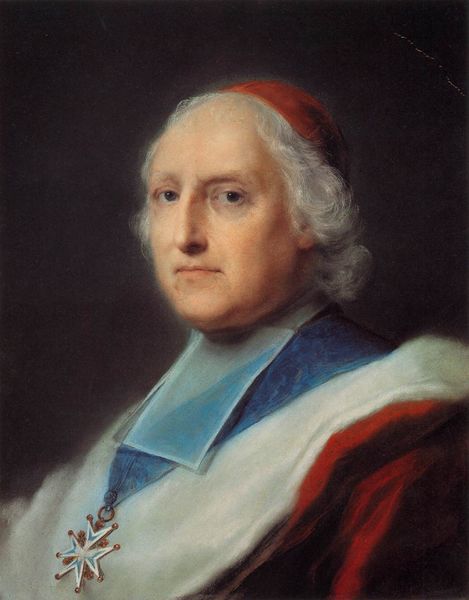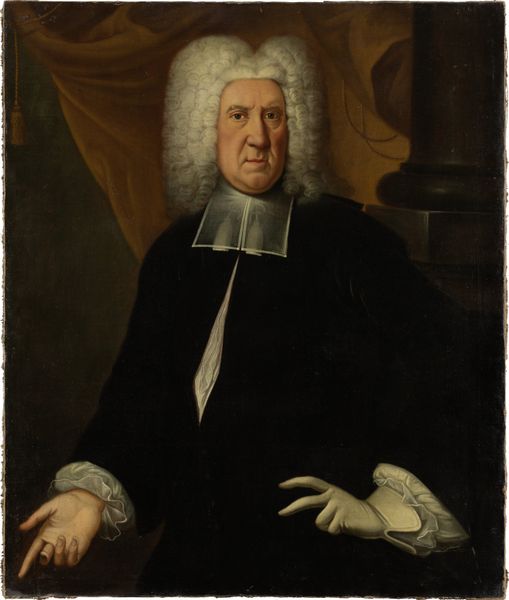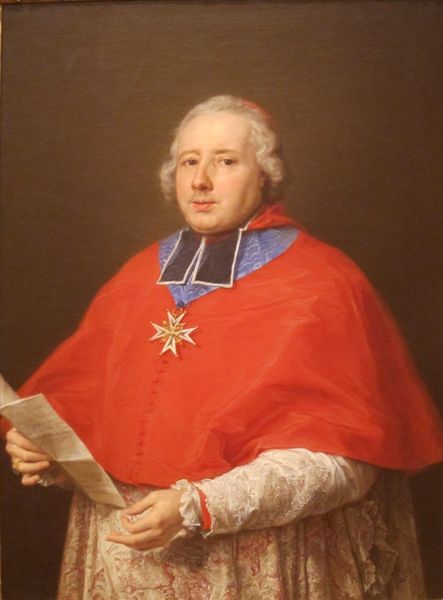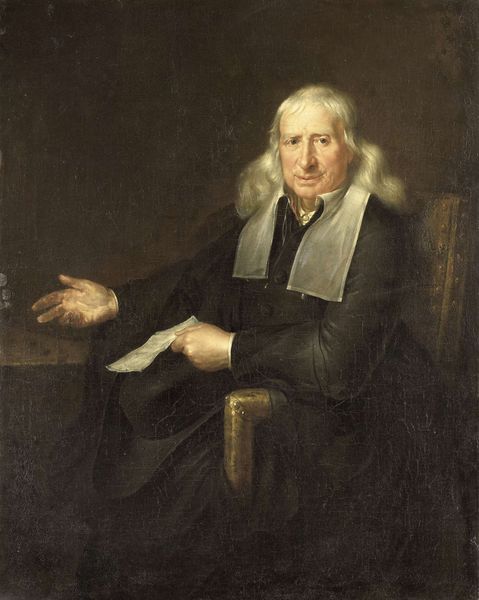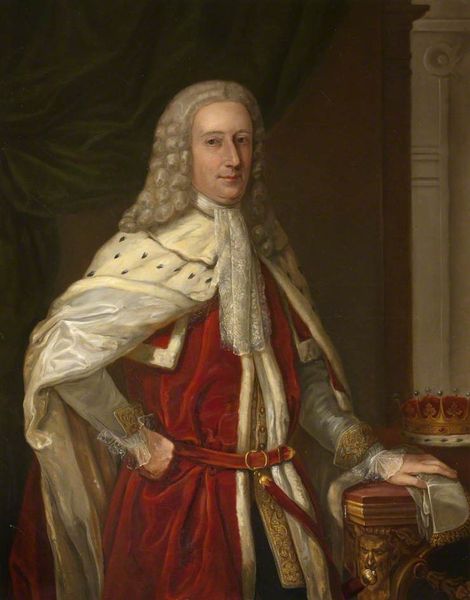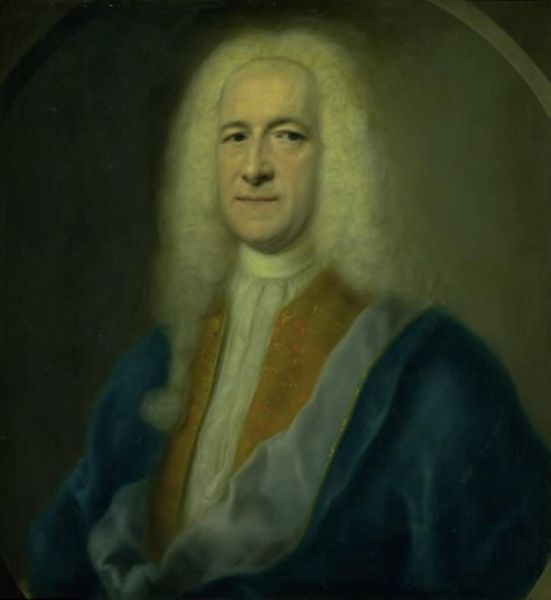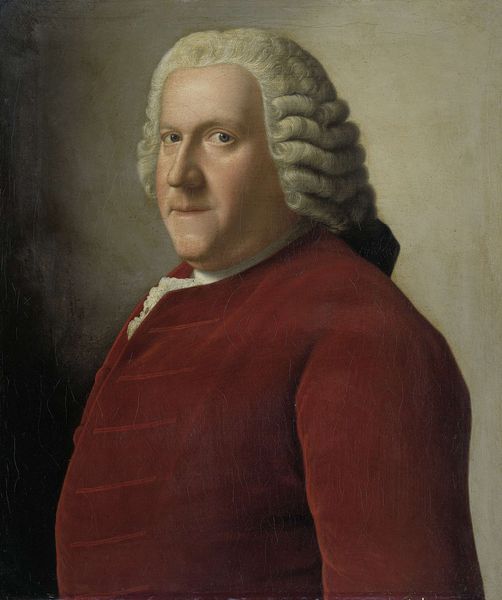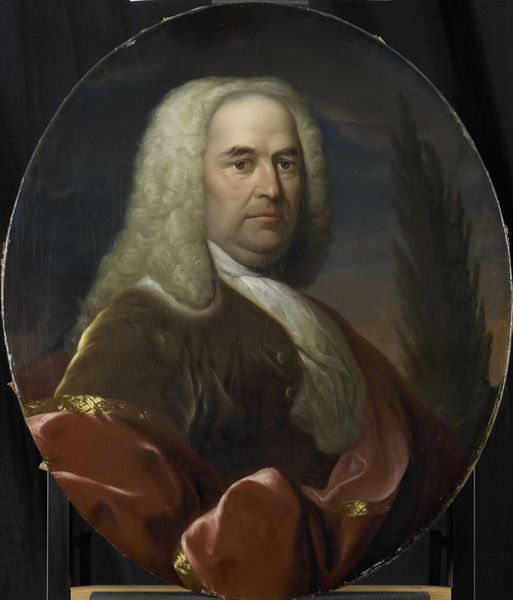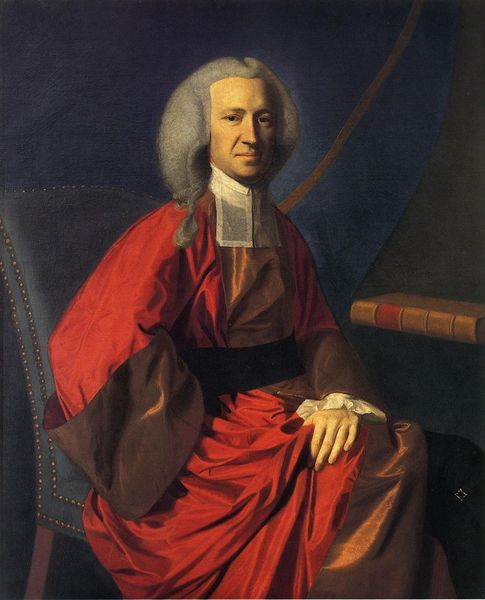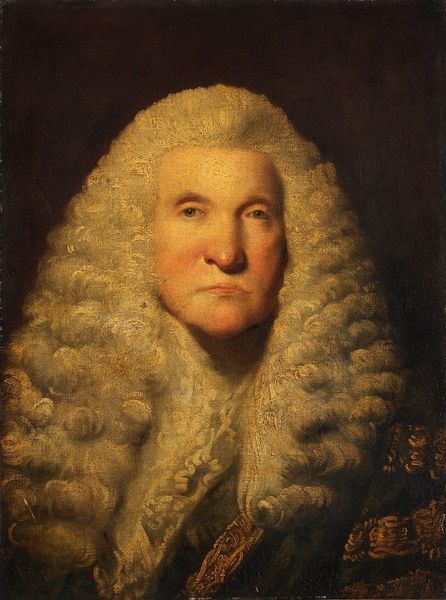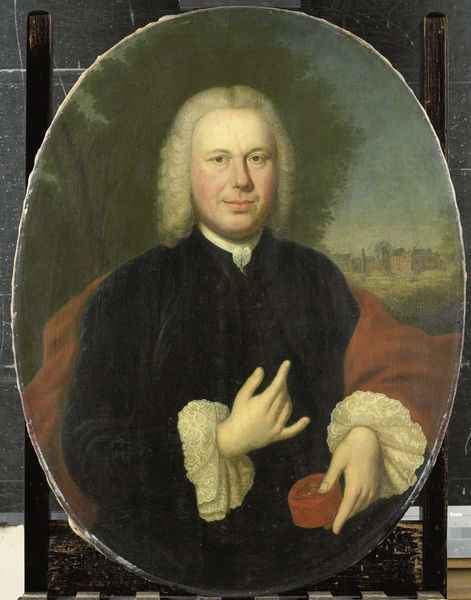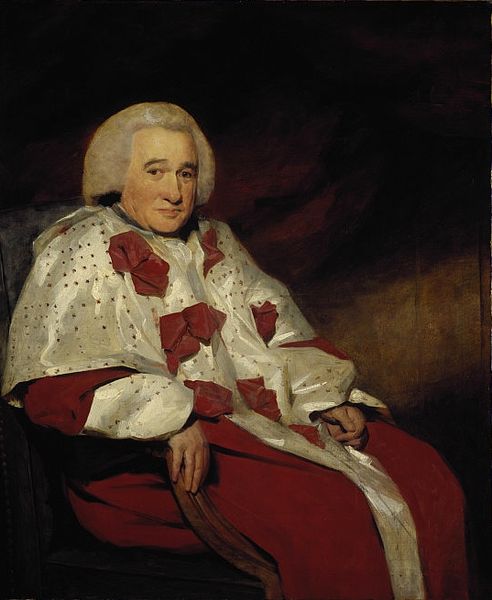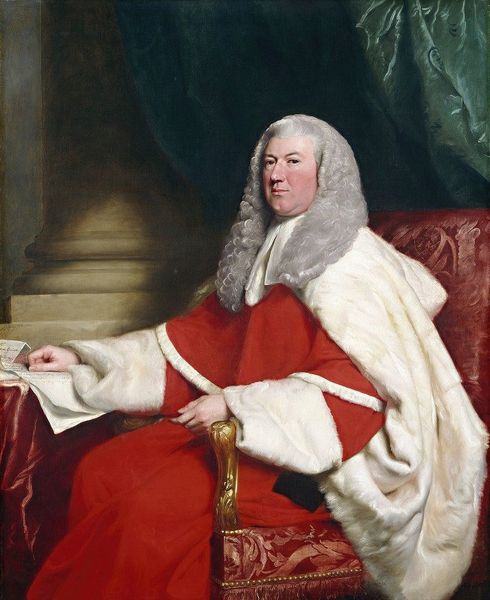
painting, oil-paint
#
portrait
#
figurative
#
neoclacissism
#
painting
#
oil-paint
#
figuration
#
history-painting
#
academic-art
Copyright: Public Domain: Artvee
Curator: Painted circa 1772, this is Benjamin West's portrait of George, First Lord Lyttelton. It's oil on canvas, adhering to the academic style of the period. Editor: Stately. The tight crop gives it a somewhat formal and rigid air. But something about the pallid complexion contrasted with that sumptuous red robe makes it strangely compelling. Curator: That robe, in its material presence, speaks volumes. The velvet, the ermine trim, the embroidered gold detailing… each element denotes wealth, status, and power. This was, after all, a commissioned piece intended to showcase Lyttelton’s position. We see him not merely as a man but as an embodiment of the ruling class. Editor: Absolutely. The portrait performs an act of legitimization, linking him to the established order. How interesting that West deploys Neoclassical aesthetics, evoking ideas of civic virtue and intellectualism, but for what ends? It raises questions about who gets to be memorialized, whose histories are told, and how portraiture itself functions as a tool of power. Curator: The materials would have been costly and sourced internationally. Consider the labor involved: the weaving of the velvet, the sourcing and preparation of the ermine, the expertise needed for the gold embroidery, not to mention West's artistic skills. The whole production reflects a complex system of craftsmanship and colonial exchange. Editor: Yes, the subject holds what appears to be a rolled document, a further indication of his influence and access to knowledge. Considering that history paintings and portraits of nobility comprised a substantial portion of art production, the choice to elevate this particular narrative is important, both from a material standpoint but also what that prioritization excludes in other histories and artistic movements. Curator: These academic portraits are a crucial primary source material for learning about the material culture and social fabric of 18th century aristocracy and their world. Editor: I concur, viewing art through a lens that critically engages with its creation, historical importance, and function allows a clearer view of past and present socio-political tensions.
Comments
No comments
Be the first to comment and join the conversation on the ultimate creative platform.
